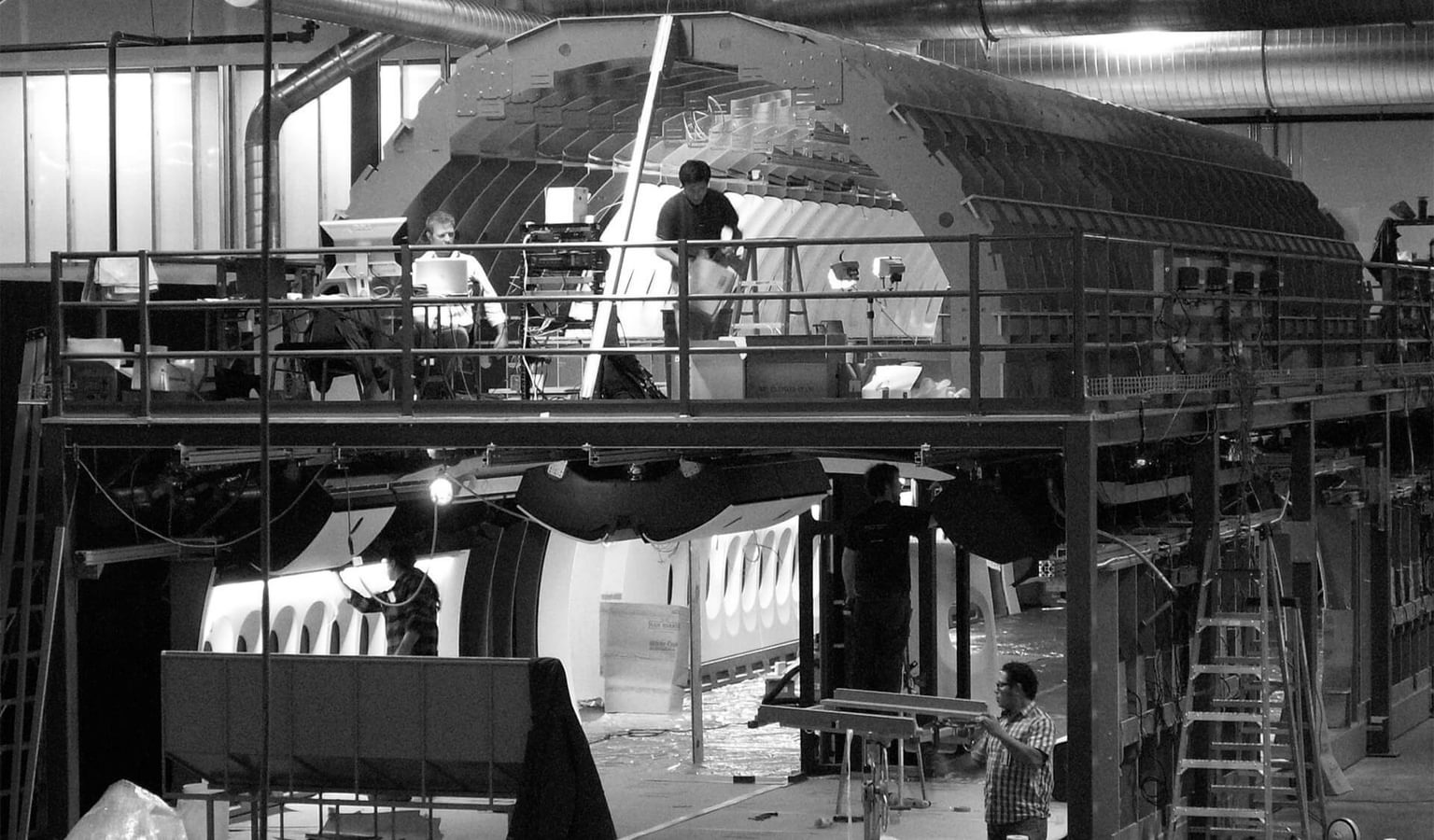
People & Process

Jesse Peck | Technical Director

Jesse Peck
Product engineering and design leader with 15 years of experience leading teams to develop innovative solutions to tough problems.The word prototype can conjure up images ranging from engineers in lab coats creating cutting-edge technology to bread boards and 3D prints on garage workbenches. While each of these images has some reality behind it, the truth is that a good prototype can change your business, and maybe the world.
Over the past 95 years, we’ve developed a practice of iterative prototyping that today is fundamental to every project we do—we call it "thinking through making," and for our clients, it's the secret to accelerating progress, reducing risk, and driving adoption of their products.
Years before their historic first flight at Kitty Hawk, the Wright brothers embraced a robust process of prototyping. Beginning with building kites, Wilbur and Orville studied the optimum shape of a wing and other types of control surfaces that would be needed to sustain human flight. They rolled these learnings into gliders and built a wind tunnel to test their designs. The data from these tests, powered the brothers to make more informed decisions, ultimately enabling them to efficiently iterate over 200 wing designs leading to the success of the Wright Flyer ahead of their rivals.
Throughout our history, we’ve relied on prototypes to inform our design decisions when shaping the passenger experience for new modes of transportation. Our relationship with Boeing began before they had built a single passenger plane. Without an actual vehicle to use as a guide, Walter Dorwin Teague and his team built a full-scale mockup in a Manhattan skyscraper to prototype the interior design and passenger experience that would define the new product. Nearly 100 years later, our designers used a similar approach to once again pioneer a new transportation modality with Virgin Hyperloop. Using a mix of physical mockups and virtual reality environments we prototyped complete journeys to develop interior architecture, seating arrangement, lighting solutions, and communications tools to help create a sense of comfort and familiarity for passengers as they zip through a windowless tube at the speed of sound.

There are few endeavors fraught with more risk than human spaceflight. While it is impossible to fully eliminate the danger associated with sending astronauts hurtling away from earth atop a million pounds of explosives at Mach 10 speeds, NASA has numerous tools and processes in place to help ensure safety and mission success—including mockups. From human factors development to crew training, the agency’s use of these tools as a part of their design thinking process is legendary, but there's no example more famous than the Apollo 13 mission. As part of the planning for the Apollo program, NASA built an exact replica of the command and landing modules. When an oxygen tank exploded on the way to the moon, these prototypes became the critical tool for astronauts and engineers at mission control to understand and repair the problem—saving the lives of the crew of Apollo 13.
Using validation vehicles gives teams confidence in design decisions and helps catch engineering errors and production mistakes before they result in schedule slides and budget overruns.
In our work, we use prototypes to reduce risk in a few ways. Early in a project, low-fidelity prototypes yield insights that help our clients focus their development activities and budgets, reducing the risk of developing a product that misses in the marketplace. In our work with Google and Disney, we used prototypes to test multiple hypotheses of how Google Home could create an engaging read aloud experience for children. Our findings identified key experience drivers to create a truly magical experience for both parent and child.
Once product needs are defined, prototypes become a critical tool to continually validate design and engineering decisions. On large development programs, we build validation vehicles—living testbeds that are continually refreshed to represent the latest engineering. These tools help us and our clients to conduct trade studies and test fit preproduction and production parts before the program goes to manufacturing. Using validation vehicles gives teams confidence in design decisions and helps catch engineering errors and production mistakes before they result in schedule slides and budget overruns.

In 1975 Steve Wozniak designed and built his first home computer. While most personal computers of the time were sold as kits to be assembled and included limited options for interaction beyond switches for input and LED indicators for output, Wozniak’s innovative design was more user-centric. The entire computer was pre-assembled on a single circuit board and was easily connected to a keyboard and home TV for a monitor. To cover the $2,000 cost of an initial production run, Wozniak hoped to sell the 50 units for $40 each. Instead, Wozniak’s friend Steve Jobs used the credibility and community support generated by the prototype to land a wholesale order for 100 computers at $500 each. Eventually, the pair sold 175 Apple-1 computers, launching the most valuable company in the world today.
The prototypes we develop with clients are often used to help drive support among stakeholders, build credibility, or secure future funding.
Similarly, the prototypes we develop with clients are often used to help drive support among stakeholders, build credibility, or secure future funding. We use the same approach for our own products. When we developed the Denny Bike, we used our prototype to highlight its many user-centric innovations demonstrating the feasibility of features like self-changing gears, locking handlebar, and intuitive pedal assist. The bike was experienced firsthand by visitors at events in Seattle and nationally as well as by over 1 billion people online. The excitement and support generated by the Denny prototype created a community of loyal fans and drove interest in the bike from investors, OEMs, and potential customers.
In product development, prototypes are more than technology demonstrators or proof of concept. They are tools to generate strategic advantage. And sometimes they are the touchstones that change everything.
